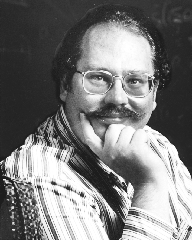Peter Shor
The Nevanlinna Prize is awarded to Peter Shor

Peter Shor has carried out pioneering work in combinatorial analysis and the theory of quantum computing. He received worldwide recognition in 1994 when he presented a computational method for "factoring large numbers" which, theoretically, could be used to break many of the coding systems currently employed. The drawback is that Shor's algorithm works on so-called quantum computers, of which only prototypes currently exist. Quantum computers do not operate like conventional ones, but make use of the quantum states of atoms, which offers a computing capacity far in excess of current parallel supercomputers. Shor's result unleased a boom in research amongst physicists and computer scientists. Experts predict the quantum computers could already become a reality within the next decade, but this rapid development is also a cause of concern for some observers. Shor has been able to prove mathematically that the new computers would mean that current standard encrypting methods such as "RSA," which are used for electronic cash and on-line signatures, would no longer be secure. "RSA" was developed in 1977 by the mathematicians Ronald Rivest, Adi Shamir and Leonard Adelmann (hence the acronym). It makes use of the fact that factoring a number is so-called one-way function. This means that while it is very easy to make a large number from smaller ones, it takes much longer to find all the factors of a large number. This time factor is the basis for the security offered by many encryption methods. Using Shor's algorithms, factoring large numbers on a quantum computer would be just as fast as multiplication. "RSA" and other procedures would no longer be safe. Experts have been making reassuring noises, since a lot of work remains to be done before such computers can even be constructed, but cryptographers are already working on the next generation of encryption techniques.
Peter Shor (born 14 August 1959) is mathematician at the AT&T Labs in Florham Park, New Jersey (USA). His research interests include quantum computing, algorithmic geometry, and combinatorial analysis. After studying at California Institute of Technology (Caltech) he gained a doctorate at Massachusetts Institute of Technology (MIT). Before going to AT&T in 1986, he was postdoc for a year at the Mathematical Research Center in Berkeley, California (USA).
Welcome to the
Feature Column!
These web essays are designed for those who have already discovered the joys of mathematics as well as for those who may be uncomfortable with mathematics.
Read more . . .
Feature Column at a glance




